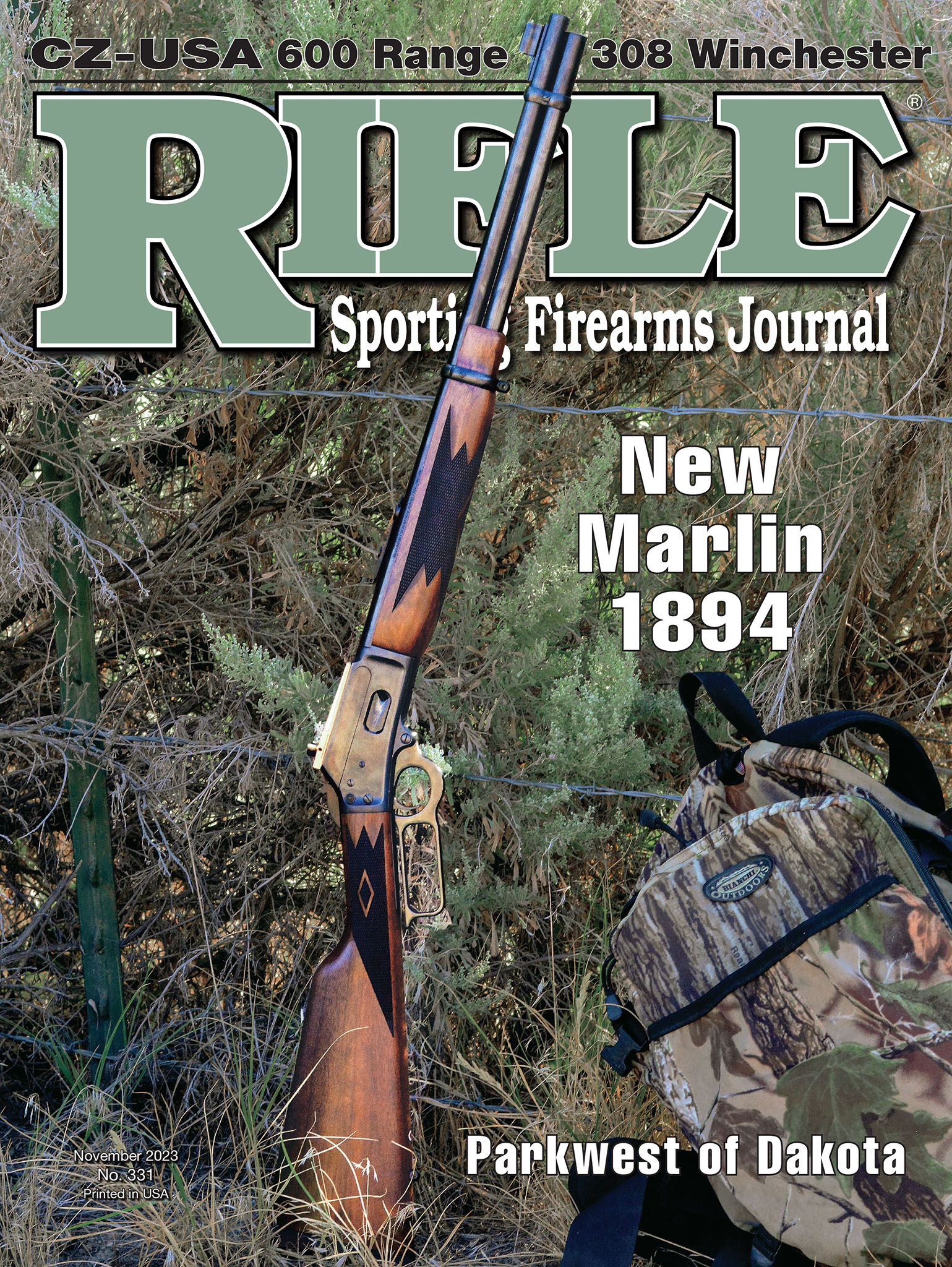In Search of Foolproof Takedowns
It Ain’t Easy
feature By: Terry Wieland | November, 23

The advantages are obvious: A disassembled rifle, in a compact case, can be carried more easily on everything from a streetcar to a bicycle (two favored modes of transport in the late 1800s) and would also fit behind the seat of a carriage or car, or on the luggage rack of a train.
Also, stored in its case, a rifle is not obviously a rifle. It could be anything from a trombone to a set of surgical saws, neither of which is as attractive to a thief.
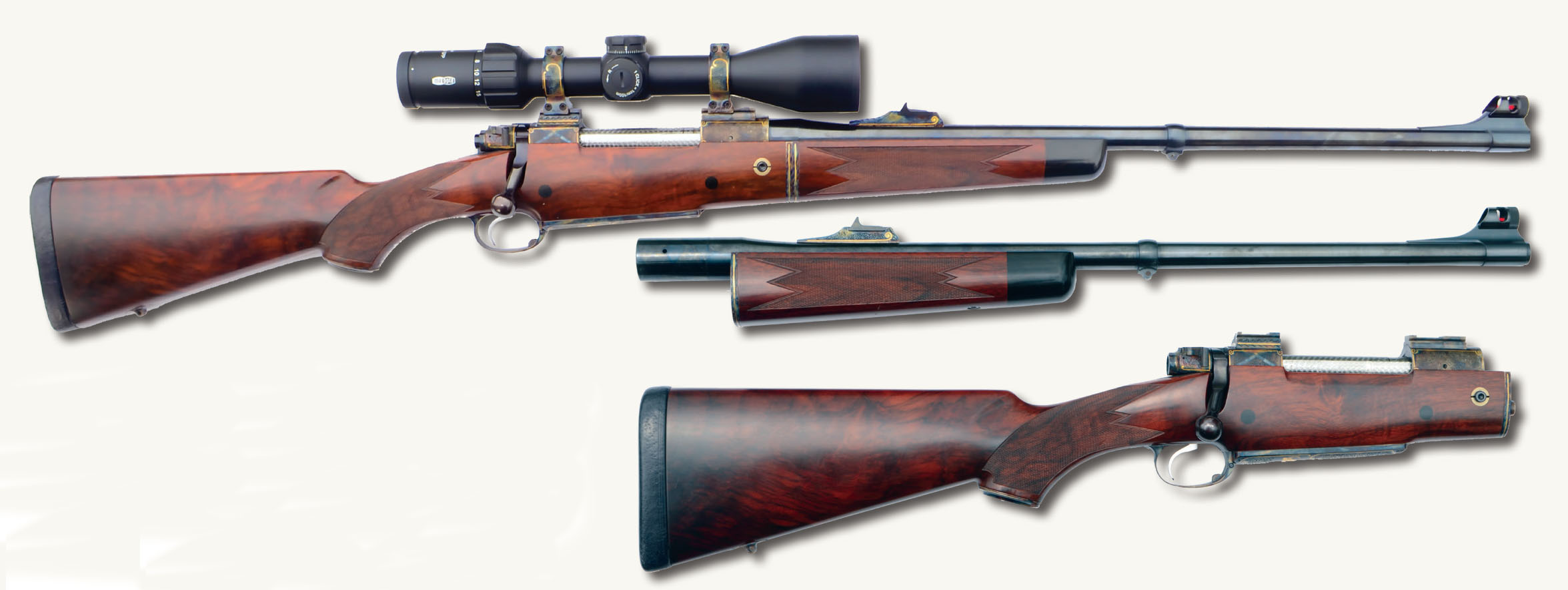
The first question is the thorniest, with some insisting no takedown rifle can be as accurate and that the problem will only get worse as the rifle is used. Others say this is hogwash. Generally, the question comes up when discussing American takedown rifles such as the Savage 99 and various Marlins and Winchesters. Over the years, I’ve had several takedown 99s and found they locked up solidly even after a century.
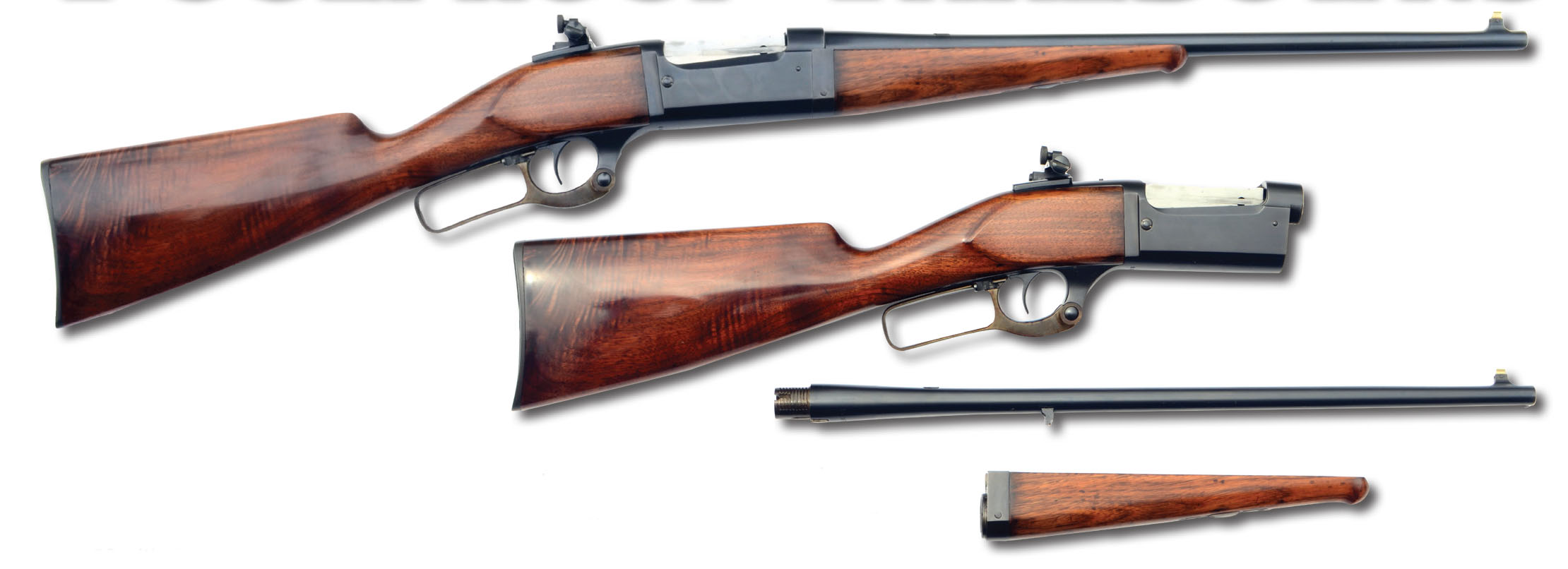
Unquestionably, the most successful takedown design is the break-action rifle. In fact, the occasional oddball design aside, there is no other type of double. While none is a candidate for a benchrest match, no one has ever blamed accuracy or the lack thereof on its takedown mechanism. The same applies to the break-action, single-barrel stalking rifles beloved by central European hunters.
A
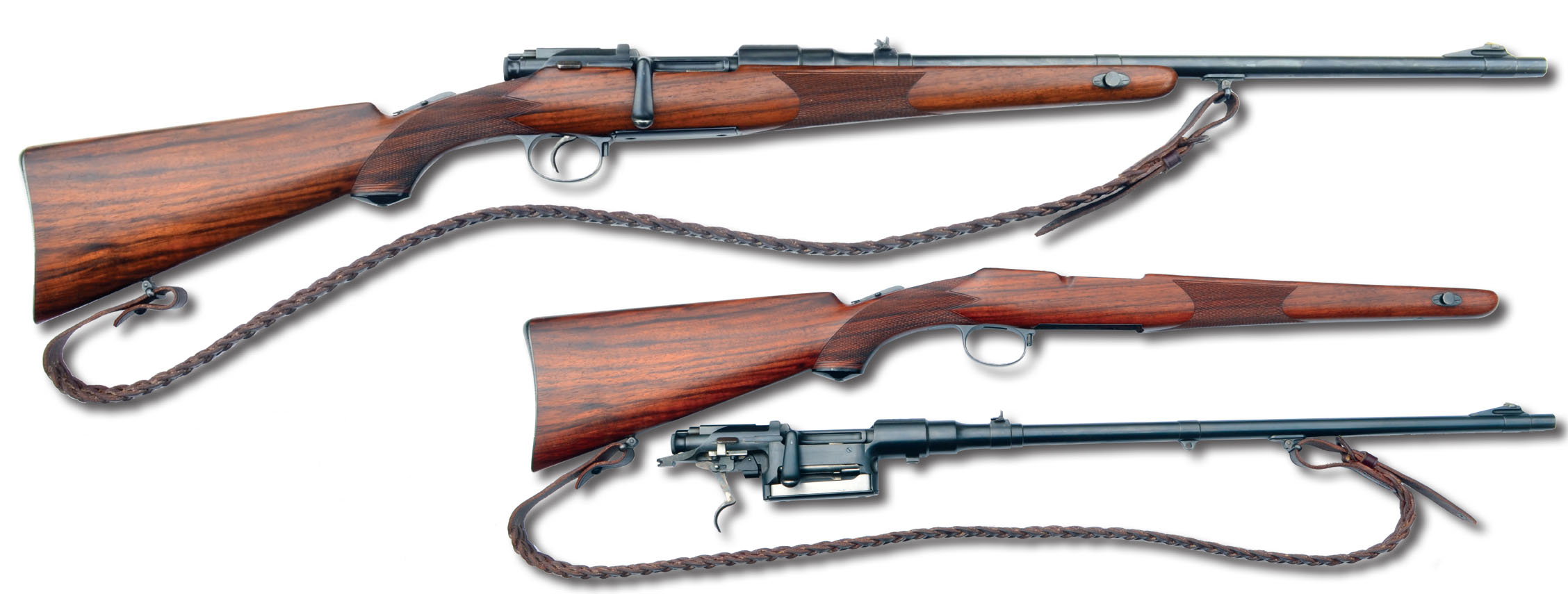
In those days, before the automobile, competitors traveled to matches around the country, riding trains and streetcars and buggies. Having a rifle that fits into a compact case was a big advantage.
In America, two designs are worth noting.

Then there’s the Stevens 44 and 44½. These are almost takedowns, in that the barrel can be removed easily with nothing more than a turnscrew. Remove the forend, loosen the set-screw that holds the barrel tightly in place, and unscrew the barrel. Since the legendary Harry Pope had a hand in designing the 44½, and happily built super-accurate rifles on it for decades, that should say all that needs to be said.
Today, this question is academic. No match or benchrest rifle is made in a takedown form, so who cares?
The second question: Are they likely to shake loose? Based on the experiences of 150 years of double rifles in big calibers, the answers are yes, they can, but no, they don’t have to, and yes, it is easily (if not cheaply) corrected.

At one time, Eley Brothers, the British ammunition maker, used a standard Boss & Co. side-by-side game gun for routine load testing, shooting random cartridges as they came off the line. Writing in the 1960s, the British shotgun writer, G.T. Garwood, estimated that gun had been fired about 1.5 million times, and was still tight as a drum, enjoying nothing more than regular cleaning. That is truly high-quality gunmaking.
The rule is, if a break-action single or double is cheaply made, it will eventually shoot loose; if it is a quality piece, it should not, given normal use.
The third question – that of tools required – is the one that bothers me the most. Over the past 30 years, some European companies, notably Blaser, have built their reputations on rifles that are basically takedowns, but can have multiple barrels in widely different calibers (from 22 Long Rifle to 500 Jeffery, for example) and have different scopes for different uses. All the bits and pieces are stored in a fitted case, assembled when needed according to the requirements at the time.
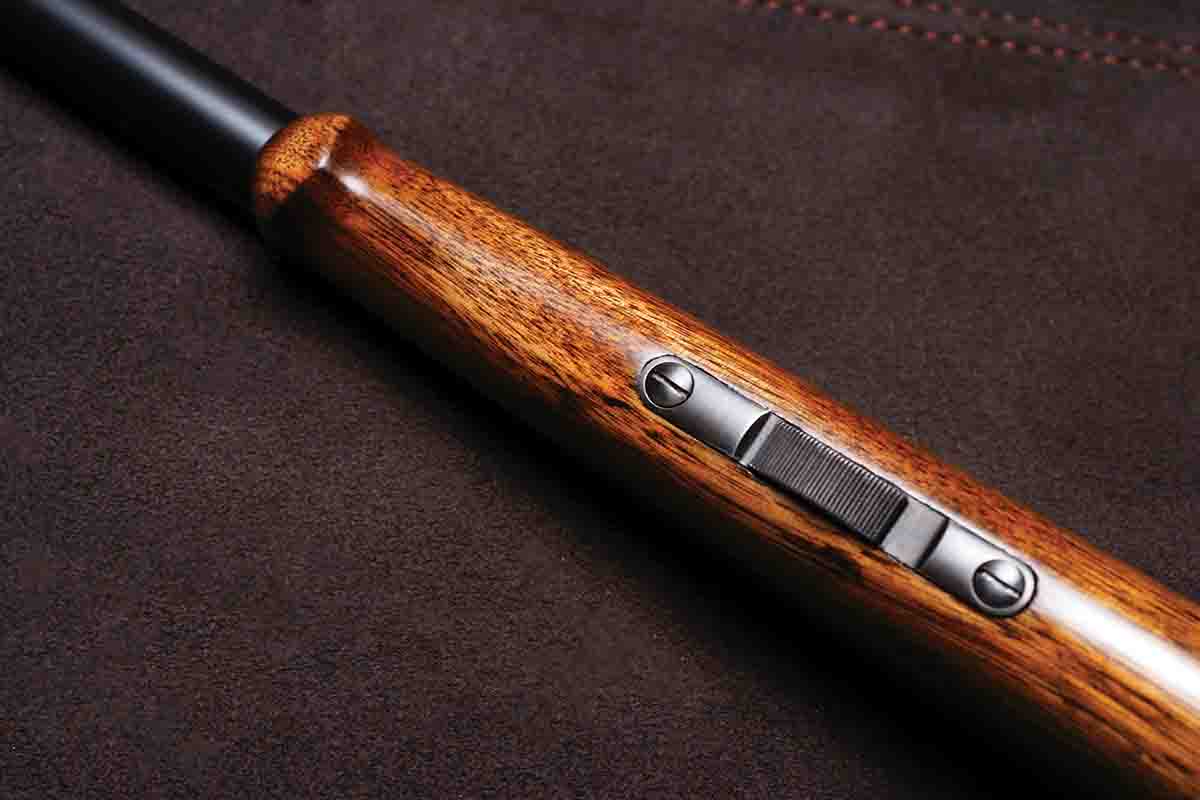
Don’t get me wrong – I love the R8 in its many shapes and forms, but I would never travel without a spare wrench. Call me overcautious, but I would always have one with me when I was hunting. One more thing to remember!
Blaser’s stablemate, J.P. Sauer, realizing the problem, had several designs where the required tool was incorporated as part of the rifle itself – a removable sling swivel, for example, whose shaft was a hex wrench. Attached to a sling, it is almost impossible to lose. Ingenious, certainly, but far from foolproof.
Looking over the rack, there are three rifles of notable design to include here. One is a Savage Model 1899, one a Mannlicher-Schönauer, and the third a Dakota Traveler. They represent three different approaches: one requiring no tools, one accepting makeshift tools, and the third requiring a special tool. They were manufactured a century apart and all are hunting rifles.
The Savage 99, made in 1913 and chambered in 22 High Power, is a masterpiece of carefully thought-out simplicity – for foolproof design and ease of dismantling, the best (and the oldest) of the three.
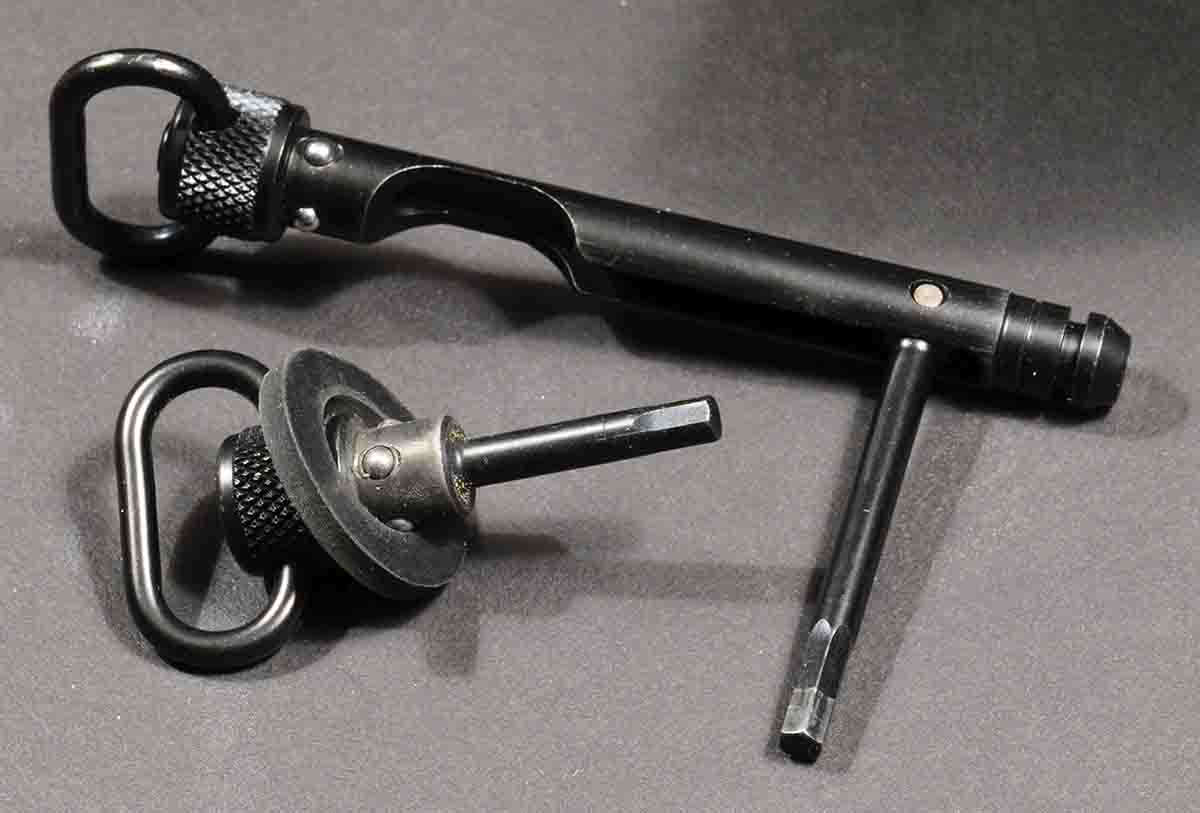
The barrel attaches to the frame with an interrupted thread, hence only the 90-degree rotation. Extremely convenient, as long as you remember to open the action slightly. I know of one person, encountering a takedown 99 for the first time, who thought the barrel was stuck and had the action in a vise, preparing to apply a pipe wrench. It was a close call.
The Mannlicher-Schönauer was manufactured around the same time as the Savage. To dismantle it, first remove the magazine assembly. This requires – usually – a cartridge, the nose of which presses down the spring-loaded floorplate, allowing it to rotate. Anything comparable will do, like a key. Next, tap out the barrel bolt that fastens the forend to the barrel. This is tight – or should be – so something like a small mallet, or the handle of a screwdriver is needed to tap it loose. Finally, a small latch in front of the trigger guard is rotated 180 degrees and the barreled action is removed from the stock.
The final example is the Dakota Traveler. This was developed in the 1990s, and is based on the Dakota 76 action, which works on basic Mauser 98 principles. In this case, the barrel is removable, with the forend attached to the barrel. The interface between the forend and the buttstock is two steel plates with a solid lug for alignment. The barrel fits into the action ring inside a sleeve.

There is an Allen screw on the left side as well, but its purpose is to force the sleeve apart and release the barrel in the event it gets stuck due to dried grease or whatever. The two screws work against each other, so they have to be tightened exactly right. If the left screw is tightened before the right one, the sleeve cannot grip the barrel, although both seem to be snugged down as far as they’ll go. This misconception could have dire consequences.
My first Traveler was a 458 Lott, and I was practicing with it. I fired, worked the bolt vigorously, and found myself standing there with the barrel in one hand and the rest of the rifle in the other. It occurred to me that this would not be ideal with a Cape buffalo bearing down on me. It was due to my not having set the two screws correctly.
Of the three designs mentioned here, I think the Savage is the most practical, followed by the Mannlicher. The Dakota is certainly ingenious – and it works beautifully when adjusted correctly.
Aside from size, one of the major claims of takedown rifles is the availability of interchangeable barrels. The Dakota, for example, could have barrels for the 300 H&H and 375 H&H. The important requirement is having the same cartridge head, to fit the bolt. The Blaser R8 allows any cartridge because it can be fitted with different bolt heads and magazine boxes.
As you increase the complexity, and the number of interchangeable or removable parts, and the tools required, you increase the chances of losing something, or something going wrong, to the point where I, for one, would be a nervous wreck.
On a dangerous-game rifle, particularly, I prefer simple and solid, with the fewer removable or adjustable parts the better.
Fascinating they might be, and one could put together a collection of guns devoted solely to takedowns through the ages, but when your life depends on it, simpler is better.


